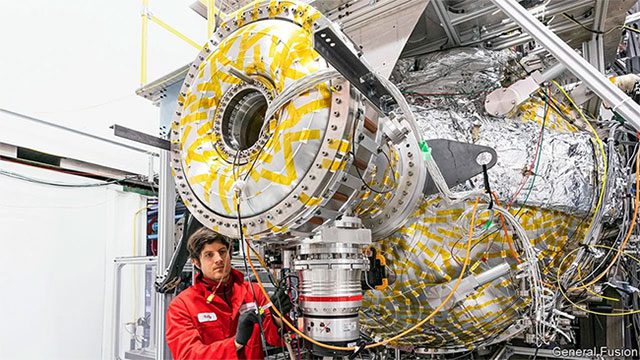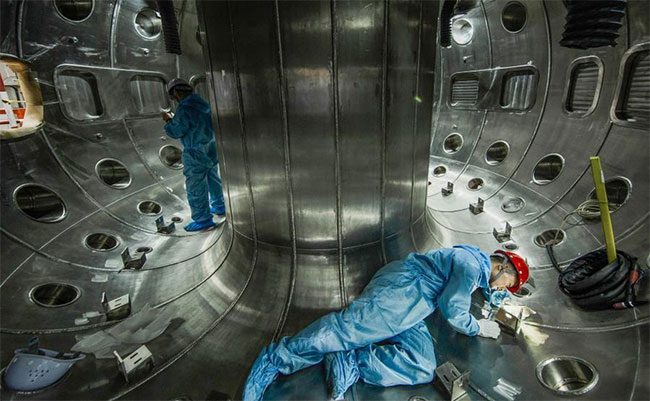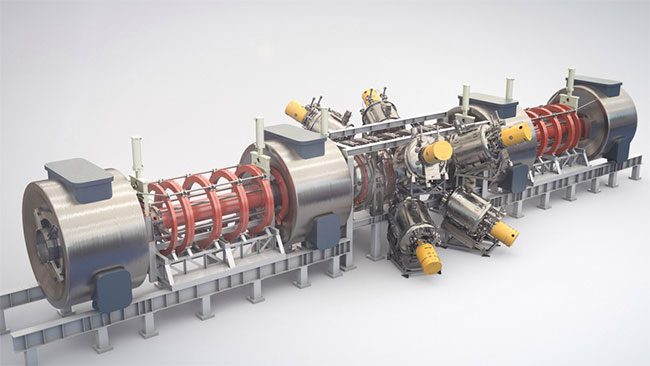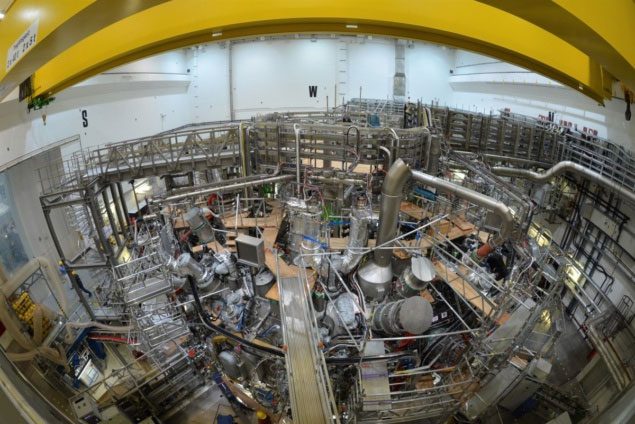Many fusion energy projects are being rushed to completion, bringing the dream of an infinite energy source closer to reality.
On June 17, General Fusion announced that it is building a fusion reactor at the UK’s national fusion research laboratory in Culham. The company hopes the project will be operational by 2025.
This is the latest addition to the major fusion reactor projects around the world, aimed at addressing the ever-increasing energy demands of humanity. Most of these projects are targeting official operation timelines between 2030 and 2040. Fusion reactions were once thought to be an unattainable technology, but according to The Economist, they are closer to reality than ever.
A New Solution for Clean Energy
Often referred to as “artificial suns,” these reactors apply the principles of fusion similar to that of the Sun, requiring temperatures of 100 to 200 million degrees Celsius inside the reactor, with costs reaching tens of billions of USD.
Fusion reactions have been researched by engineers since the 1950s, and answers are still elusive. ITER, the largest scientific research project on energy in the world to date, is one of the most promising approaches, aimed at using nuclear fusion as a power source.

General Fusion’s fusion reactor combines fusion and magnetic confinement, with hundreds of pistons surrounding the plasma source to create significant pressure. (Photo: General Fusion).
To generate electricity, current nuclear power plants rely on fission, which splits heavy atoms into lighter ones. The energy released is then used to boil water into steam, turning turbines to generate electricity.
In contrast, fusion plants generate heat by combining light atoms to form heavier atoms, mimicking the operational process of the Sun, potentially creating an unlimited clean energy source while minimizing the risks associated with nuclear weapons technology and reducing radioactive waste compared to fission processes.
However, for fusion reactions to occur, temperatures above 100 million degrees Celsius are needed to combine the hydrogen isotopes deuterium and tritium, resulting in plasma.
“Unlike fission, fusion reactions are more challenging to achieve and maintain,” said Christofer Mowry, CEO of General Fusion.

Inside the fusion reactor being tested in China. (Photo: Xinhua).
General Fusion’s concept is a combination of magnetic confinement fusion (MCF) and inertial confinement fusion (ICF). This approach is referred to as “magnetic target fusion”, a concept from the 1960s. According to Mowry, this method eliminates the limitations of magnetic fields by using strong electrical pulses to create stable plasma spots within the reactor.
However, these plasma streams only last about 20 milliseconds, insufficient to generate significant energy in MCF reactions, but long enough to be compressed in ICF reactions. Therefore, General Fusion’s reactor in the UK will be lined with lead and molten lithium. Gas-driven pistons will compress the core after plasma is pumped in, transforming it from a cylindrical to a spherical shape and significantly increasing the atomic fusion rate.
According to Mowry, the company hopes to finalize a commercial reactor by 2030, with a price of $50 per MWh, to compete with coal as renewable energy becomes cheaper.
A Competitive Market
General Fusion is not the only company pursuing the commercial fusion market. On April 8, TAE Technologies, a competitor based in California founded in 1998, announced it had raised $280 million for its own reactor, bringing its total investment to $1.1 billion.

TAE Technologies’ fusion reactor in California. (Photo: Techcrunch).
Its advantage lies in not producing high-energy neutrons, which complicate the process of fusing deuterium and tritium. Instead, it employs a magnetic confinement method that does not create a toroidal magnetic field but still forms a toroidal plasma stream.
Other competitors of General Fusion include two UK companies, First Light Fusion and Tokamak Energy, both located near Culham, as well as two US companies, Commonwealth Fusion Systems and Zap Energy.
However, this is not the only direction for fusion reactions, as the Max Planck Institute for Plasma Physics, a German government agency, has successfully constructed the Wendelstein-7x “stellarator” fusion reactor, which is used to maintain control over nuclear fusion by confining hot plasma within a magnetic field.
This reactor is currently awaiting approval from the German Nuclear Regulatory Authority. All procedures are expected to be completed by October, and it will officially become operational.

Max Planck’s Wendelstein-7x “stellarator” fusion reactor. (Photo: Physicsworld).
General Fusion’s reactor in Culham is expected to open in 2040. Stephen Dean, who runs Fusion Power Associates, a research and education organization, stated that General Fusion chose Culham to quickly access the market.
Dr. Dean mentioned that current companies will soon succeed in building a reactor that generates useful energy.
Despite the potential of fusion reactions, advanced fission reactors are still attracting attention from some investors. Specifically, on June 2, TerraPower, a company backed by Bill Gates, announced plans for a high-tech nuclear plant in Wyoming. This is a highly competitive and risky market for investors.





















































